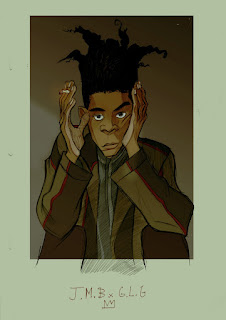Now, more than ever, we need to talk about racism.
Yes, Confederate flags are coming down. They needed to come down years and years and years ago. But now that the flags are gone from government buildings in South Carolina,
The Dukes of Hazzard has been pulled from the airwaves, and
musicians are removing Confederate symbols from their shows, I bet there are more than a few people out there who are thinking, "Good job, problem solved, don't need to think about this anymore." Once all of this "dies down" (i.e., major media networks stop covering the flag, police violence, etc.), many will be happy to forget about racism or think that our problems are solved. Meanwhile, there are those who insist on minimizing racism, explaining it away, or flat-out denying that it exists.
Racism is still out there, pervading every aspect of our society. Getting rid of Confederate symbols in public spaces is a step in the right direction, but one potential downside to banning them
everywhere is that we might inadvertently silence dialog about why Confederate symbols are oppressive in the first place and potentially foster a belief that getting rid of hateful symbols erases racism. No, racism is an institution, grounded in history, that goes far beyond symbols. As educators, parents, and friends, we need to talk about it with young people and among ourselves.
That's where books come in.
A helpful way to understand racism and its current persistence in our society is to read histories that trace the journeys of ethnic groups through our nation's past and into the present. Engaging with these books can show readers how, for example, slavery might be over, but the effects of slavery are still very much with us today in the forms of
White privilege and
systemic discrimination against Black people. As
Crowley & Smith (2015) pointed out, people need to understand racism through a "knowledge of history and an appreciation for structural inequity along racial lines" (p. 172).
The books that I'm about to recommend can be useful in high school classrooms or for adults who are interested in exploring the history of racism and discrimination in the US more thoroughly. I believe doing so is extremely important because these issues are often glossed over or completely omitted from traditional histories and other reading materials that many of us encountered in school and that students are still reading today. Also, I chose graphic novels because they're accessible, visual, and incredibly engaging to read -- a great break from textbooks.
First is
Still I Rise: A Graphic History of African Americans (Laird & Laird, 1997/2009), an overview of Black history that I just finished.
I love this book because it provides tons of information left out of history textbooks, such as a closer look at the beginnings of slavery, Reconstruction, and the beginnings of the Civil Rights movement.
Still I Rise presents readers with a fantastic amount of balance, exploring the bad (violence, discrimination) with the good (the important contributions of Black inventors, politicians, artists, etc., to our society) and showing the diversity of Black opinions, experiences, individuals, and communities in our country. Most important to me, however, is that this book shows how racism has persisted over the years and that despite progress, we must continue to fight against it.
Of course, racism isn't just a Black and White issue. Fortunately, there are other fantastic graphic novels that demonstrate the roots of racism and can foster ruminations and discussions about race/ethnicity in history and today.
Latino USA (Stavans, 2000/2012) is an excellent option:
This book traces the history and diversity of Latin@ people in the US and shows readers the roots of racism and how it continues today. Like Still I Rise, Latino USA presents multiple perspectives within and among Latin@ communities about historical and contemporary issues, demonstrating how Latin@s aren't a homogeneous group and encouraging critical thinking.
Granted, simply reading a book won't convince everyone of our dire need for racial justice and healing in the US -- but an engaging piece of literature can be a wonderful springboard. Coupled with deep discussion, reading can be a transformative act. So share books like these with your high school students, your children, your adult friends. Read and discuss.
Do you know of any other good books that explore history and racism and want to recommend them? Let me know!




























